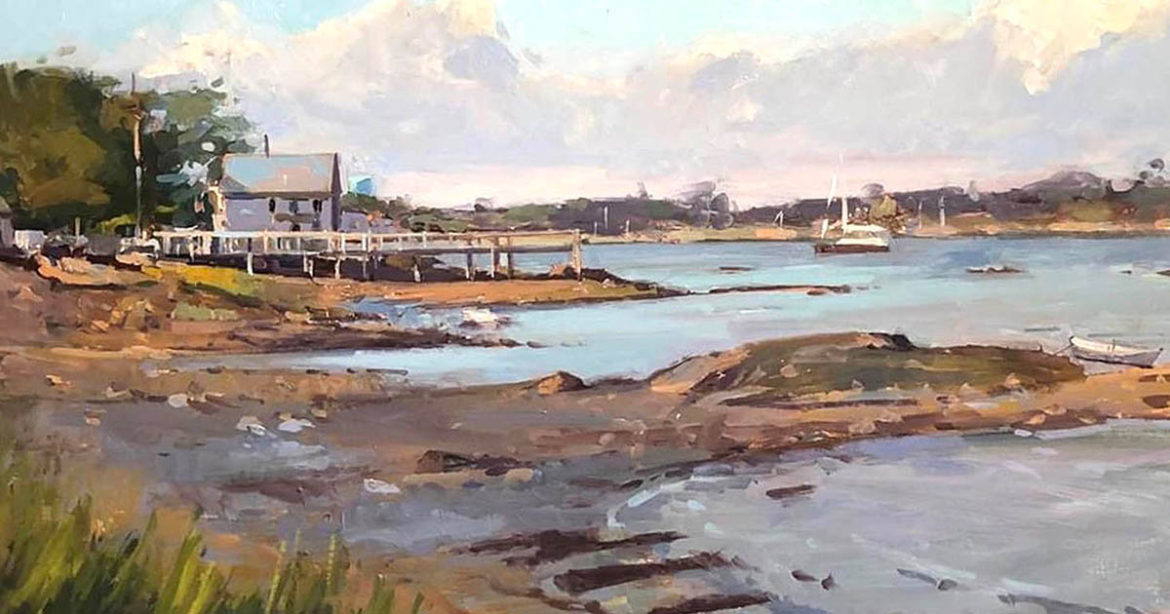Deciduous trees. Coastal mists. Rustic, timber-framed houses. Salt marshes. Snow. Craggy coastlines. Docks and pilings. Vivid seasons. Cloud drama skies. The magnetism of the New England landscape has drawn a long line of talented names to approach the canvas, eyes wide open, brushes in hand.
Aldro Thompson Hibbard. Paul Strisik. Todd Bonita. Edward A. Page. Charles H. Woodbury. Antonio Cirino. John David O’Shaughnessy. Charles Movalli. JC Airoldi. Gertrude H. Fiske. Alastair Dacey. Joseph B. Davol. George Carpenter. Don Stone. Daniel J. Corey. Peter Bela Mayer. Dennis Poirier. Janet Ledoux. Charles Edwin Lewis Green. William Burpee. Madeleine Hopkins. Emile Albert Gruppé. More. From all across the years, decades, and centuries. Too many to mention here. (RELATED: Join our COLORFUL Ogunquit, Maine Art + Photography Facebook Group to see and share lots of new AND historic artwork depicting our town)
But one name I absolutely don’t want to leave off of today’s list is David Lussier.
About Artist David Lussier
“Lussier is an award winning contemporary impressionist and nationally-recognized plein air painter and workshop instructor. He is a painter in the purist sense of the word. In his poetic and intimate oil landscapes he strives to capture the essence and sense of place of his subject matter. His use of bold broad brushwork brings the surfaces to life and begs the viewer to return for a second look. He has been painting professionally for more than twenty five years, has garnered more than 75 prizes for his work and is in numerous private and corporate collections throughout the United States. His work has been featured in many art journals and he is a professional member of some of the finest art associations and groups in the country.”
Mr. Lussier is also someone often found in the same Ogunquit, Maine neighborhood that I call home. He’s painted locally-recognized subject matter ranging from vast Ogunquit Beach vistas, through salt-water-splashed Marginal Way cliff-scapes, and even down to the iconic Perkins Cove pedestrian footbridge.
That’s why it seemed high time for me to finally corner Lussier and learn a little more about the work he does — and his deep connections to the past (and present day) Ogunquit Art Colony + Perkins Cove art scene.
RELATED: Make certain you follow @OgunquitNews on Instagram for your daily dose of Ogunquit!
Keep scrolling down for my interview with David Lussier + to see some of his Ogunquit-area paintings!
ARTISTS: Are you an artist who creates work depicting Ogunquit, Maine (or the surrounding areas) and is seeking to reach a wider audience? CLICK HERE to Contact Ogunquit Barometer today and ask us how we may be able to help!
A Conversation With Artist, David Lussier
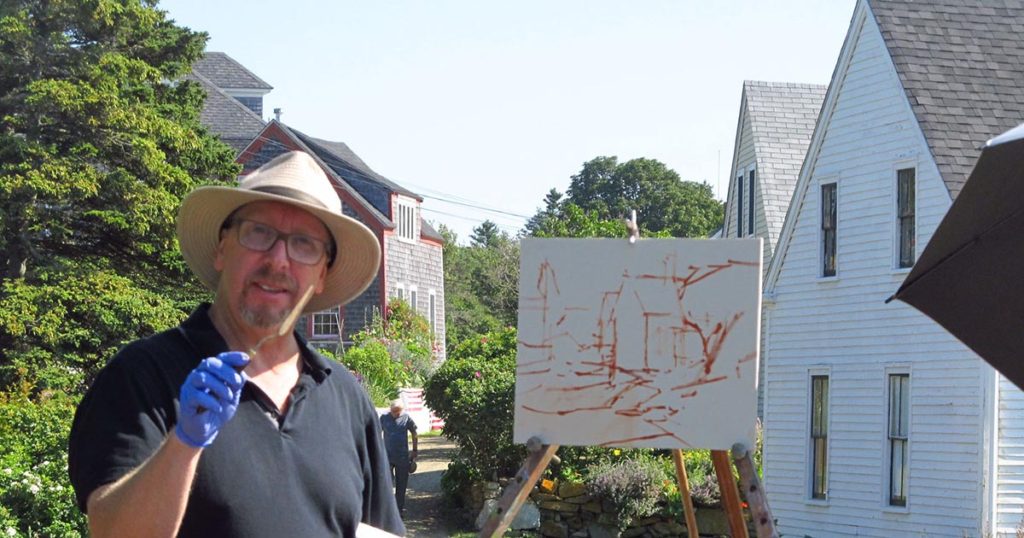
Thanks for taking the time to speak with me today, David. Why don’t we start by blocking in some of the big stuff, the colors and shapes beneath it all that have given structure to your life. How did you get started in the arts – and how did that lead to the work you are most known for today?
After high school I went to four years of art school with a major in illustration. The curriculum at Paier College of Art in Hamden Connecticut was rooted in very intense academic training. There was a focus on realism and I learned to become a really good draftsman and how to paint in a photo realistic style. I found myself gravitating towards portrait work, and I did start off in that direction after I graduated. Illustration ended up being a stepping stone towards becoming a fine artist. At some point I started going outside to paint as a way to loosen up and it’s like I was hit over the head. I knew, almost instantly, that painting outside was what I was supposed to do.
Today, I’m most known for my paintings of boats and harbors and farms and street scenes. I’m pretty much an all-New-England painter. I paint a lot of paintings of Monhegan Island Maine too. Monhegan gives me an assortment of subject matter and I never tire of it.
It’s always a joy for me, to learn more about my fellow artists who are connected to the Ogunquit Art Colony / Perkins Cove scene. There’s such a rich history here, among these iconic landscapes. So many talented artists (some with big personalities) who happen to be connected (oftentimes in unexpected ways) by tendrils of relationships and shared knowledge twisting through the passing years.
In that vein, I understand you were a student of George Carpenter, an internationally-recognized plein air artist with a gallery in Perkins Cove — and a juried member (1985) of the Ogunquit Art Association / Barn Gallery. How did you and George Carpenter come to meet and begin working together?
I was on vacation in the very early 90’s with my family and after dinner one night (which was my first time ever being in Perkins Cove), I saw George’s work in his gallery window. I was really taken by it and so bright and early the next morning, I went down and was thrilled to see him sitting in front of the gallery painting. I asked if it would be alright to watch and then proceeded to stand there for a good 40 minutes, mesmerized by his ability. At some point he asked me if I painted and struck up a conversation. He liked that I wasn’t asking him a bunch of questions and by the end of our conversation I had been invited on a painting trip up north with him. We did several painting trips like that and he really opened up to me and shared so much of his knowledge.
Any amusing George Carpenter stories you’d be willing to share?
George had a penchant for getting these ideas about where he wanted to paint for the day — and they were often places that were nowhere close to our current location.
On more than a few such occasions, we would drive a couple of hours to paint in a particular spot that was beckoning him. It was how I got turned on to some fantastic painting locations though, so I was willing to just go with it. During the ride, he would tell me stories of his time painting with some of the greats, like Emile Gruppe, for instance.
What were the most important things Carpenter taught you?
As a young artist just starting out with painting the landscape, I was still setting up in front of a scene and quite literally copying what I saw; while, right next to me, George would turn the exact same scene into a knockout composition.
There’s a saying in painting; “overstate, understate; never tell the truth.” With George I learned how to break away from the comfort zone of never taking chances. It was a long lesson in the making.
George would also be very no-nonsense with his critiques, which I appreciated.
I once arrived a few days early to a place where George and I were going to meet for a 5-day painting trip. I was just getting over the flu and had very little energy, but I went about pushing myself to paint. I wanted to have paintings to show George. They were garbage and he told me so. But he also gave me the advice to not paint if I’m under the weather because you need all your faculties for painting.
Flash forward to present day, and many of your Ogunquit experiences with George Carpenter appear to have come full circle… There’s an appealing symmetry to some of your experiences that can seemingly be traced back to that first visit of yours to Perkins Cove, when you happened upon Carpenter as he painted. How did Ogunquit, Maine come to have such an important impact on your life?
It started out with George Carpenter at his gallery in Perkins Cove and now all these years later, I’m showing my work in (and helping to manage) the Todd Bonita Gallery in Perkins Cove, which was George Carpenter’s gallery for about 35 years.
My wife, Pam Lussier, and I would come to Ogunquit from Connecticut to paint in and around this area for many years. Eventually, Todd Bonita asked Pam and I if we wanted to be a part of the Ogunquit Art Colony revitalization — and we said yes.
One year after teaching for the Ogunquit Summer School of Art with Todd, we made a permanent move to the area. It’s been the best thing we could have ever done. We are finding new collectors and students that are extremely welcoming and we belong here.
Sharing the knowledge is such a big part of the Ogunquit Art Colony tradition. A friend of mine, Ogunquit artist Norman E. West (1952-2016), once told me, “You have to pass it on. It’s not just about the art, it’s about sharing and caring.” West also had this great quote from his mentor, “Whatever I teach you belongs to everybody”. Tell me a little more about the teaching you do…
I teach painting workshops both plein air and in the studio. I do some mentoring too. Since last March, I’ve been working with students online and it’s been a fantastic new way to teach.
My wife Pam, also a painter, teaches with me in all our workshops. I love to teach and so does she, so we really put our heart and soul into it. We’ve been married for 20 years now and teaching together for 21.
How would you characterize your approach to teaching? What do you hope those who attend your workshops will come away with?
My approach to teaching is always based on the fundamentals because there is just no way to get away from them.
I also encourage students to be themselves when they paint. I think one of the best things any instructor can do for a student is to help them to find their own voice and learn to spread their wings. It’s probably one of the hardest too, because you have to be able to get inside a students head, but both Pam and I seem to have a natural gift for it.
Our workshops always start with painting demos because it’s such an important part of the learning process. I can tell you that I used to set up all my gear when I would paint with George Carpenter, with the full intention of walking away with my own painting, but there were so many times that I would just put down my brushes and watch his approach from start to finish.
What are you working on these days? Is there anything new you’re experimenting with?
I’m always experimenting and trying new things. Some things, like my palette of colors, are never going to change. I’ve been using it for almost 30 years, but I am still experimenting with what can be done with it. Color fascinates me. Paint handling fascinates me. Just mixing up paint on my palette fascinates me; so I’m always experimenting with what I can do. I’m always trying to approach each new painting with a fascination like I’m just seeing the subject for the first time.
Talk to me about some of the art that has inspired you and informed your own work over the years. Is there anything out there you can point at as having pushed you to become the artist you are today?
Probably reading Emile Gruppe’s book ‘Gruppe on Direct Painting’ back when I was in art school, first really opened up my mind to what a painterly style of painting was all about.
But an 8th grade field trip to the Metropolitan Museum of Art in New York City turned me onto John Singer Sargent and I was completely drawn to his paintings and that cemented the idea that I would be an artist.
Later as I began to immerse myself more and more into landscape painting, I was able to see a large show of paintings by George Bellows at the Frick Museum in New York City and that absolutely without a doubt changed me as a painter moving forward. His painterly style, his amazing brushwork and experiments with different color palettes was an invitation to become the best version of me as a painter that I could be. Still working on that.
Who are you seeing these days that are creating noteworthy work in Maine?
Wow this list could get very long — and I know and have so many great friends who do this for a living in Maine. I would say to just look at any Maine gallery website and look at their stable of artists. There are so many talented painters trying to make their way in this world and they all have something special and unique to offer. If I’m going to give you one name it would be my son Benjamin Lussier who is both painting landscapes and seascapes for some well known galleries and working to finish up his doctorate at Columbia University. He has a ton of talent and he’s without a doubt a rising star in this field.
If you could go back to the beginning of your journey as an artist; what is the one piece of advice you’d give your former self?
I’d make sure that I told myself that painting is a lifelong journey of exploration and growth. Maturity doesn’t happen out of art school. And I’d tell myself to not get distracted by all the other things that life will throw at you.
Tell me, David, what are you most proud about in your painting career, so far?
I’ve been invited to some of the top plein air painting competitions in the United States and I’ve had some success with winning top prizes and finding new collectors along the way. I really participate in these events more for the camaraderie that takes place between the artists — and because I’ve gotten to meet and make friends with some amazing people who host artists in their home for these events. But being recognized by your peers is a nice thing to have happen too.
And where can we see more of your work?
Todd Bonita Gallery Perkins Cove, Ogunquit Maine; Todd Bonita Gallery, Portsmouth NH; Wiscasset Bay Gallery, Wiscasset Maine; Landmark Gallery, Kennebunkport Maine; Laffer Gallery, Schuylerville NY.
Thanks, again, for taking the time to talk with me today, David! Much appreciated! But before I go, tell my readers something I didn’t ask about during our conversation that they might be surprised to learn about you…
I’m an avid golfer with a 10.8 handicap. I absolutely love the game but I don’t get a lot of time to play. I also paint US Open courses for the United States Golf Association, which allows me to meld my two passions together.
Photos of Artwork By David Lussier. Click Any Image Below for a Larger View.
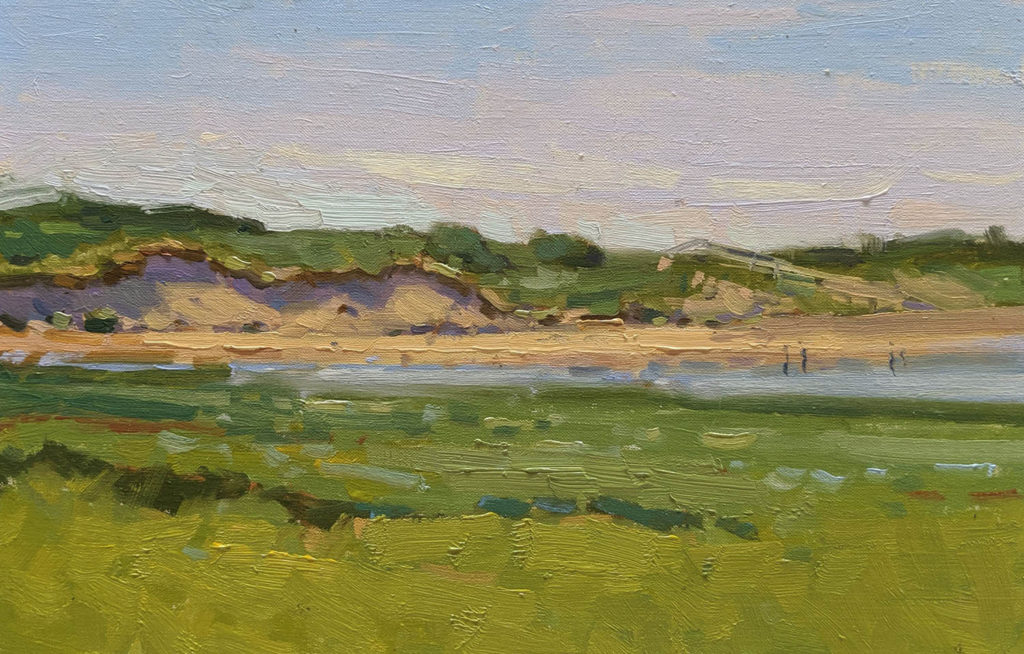
David Lussier | Dunes, Beach Plum Farm | 6×9 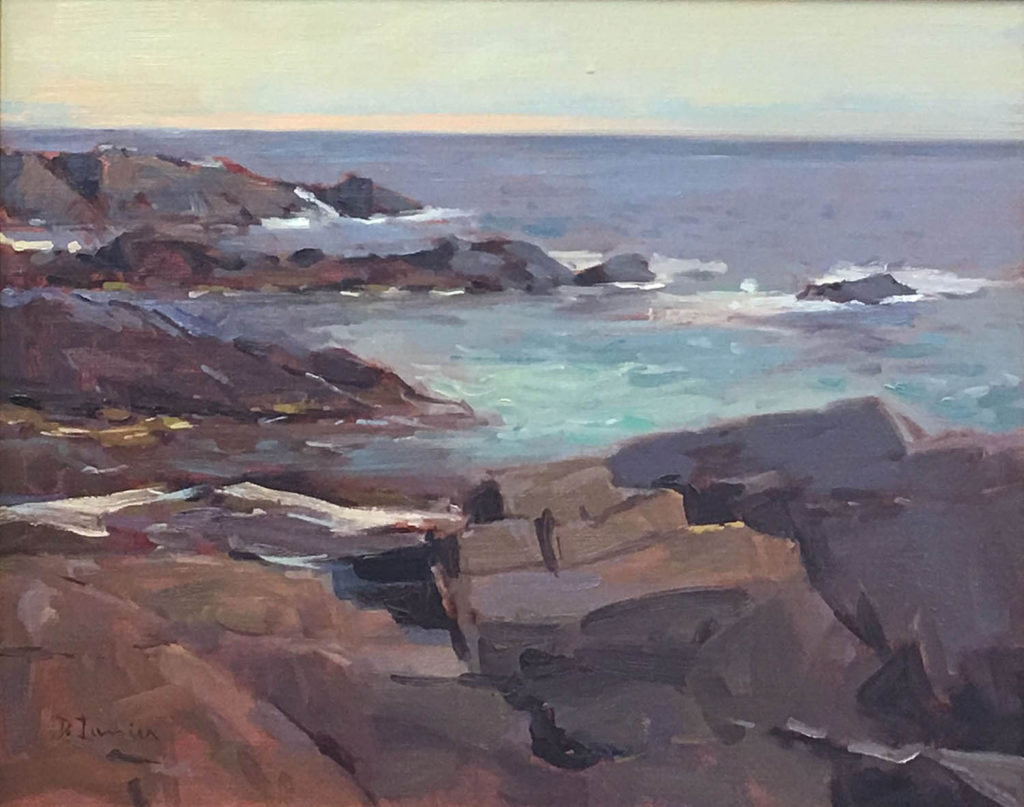
David Lussier | Low Tide | 16×20 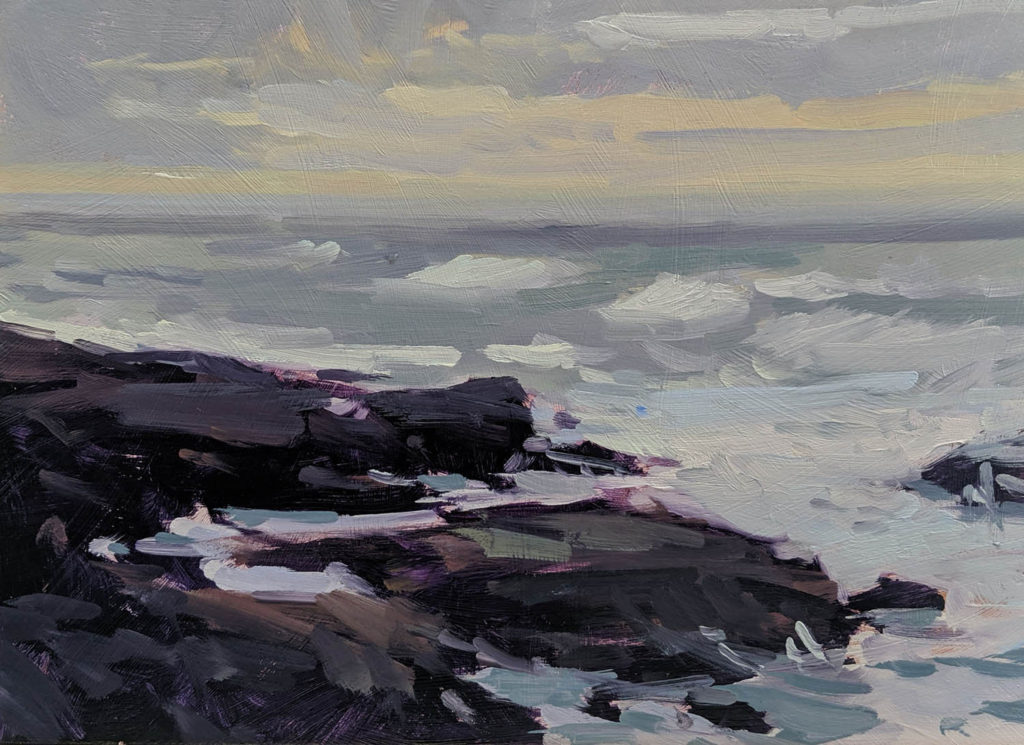
David Lussier | Marginal Way Rollers | 8×10 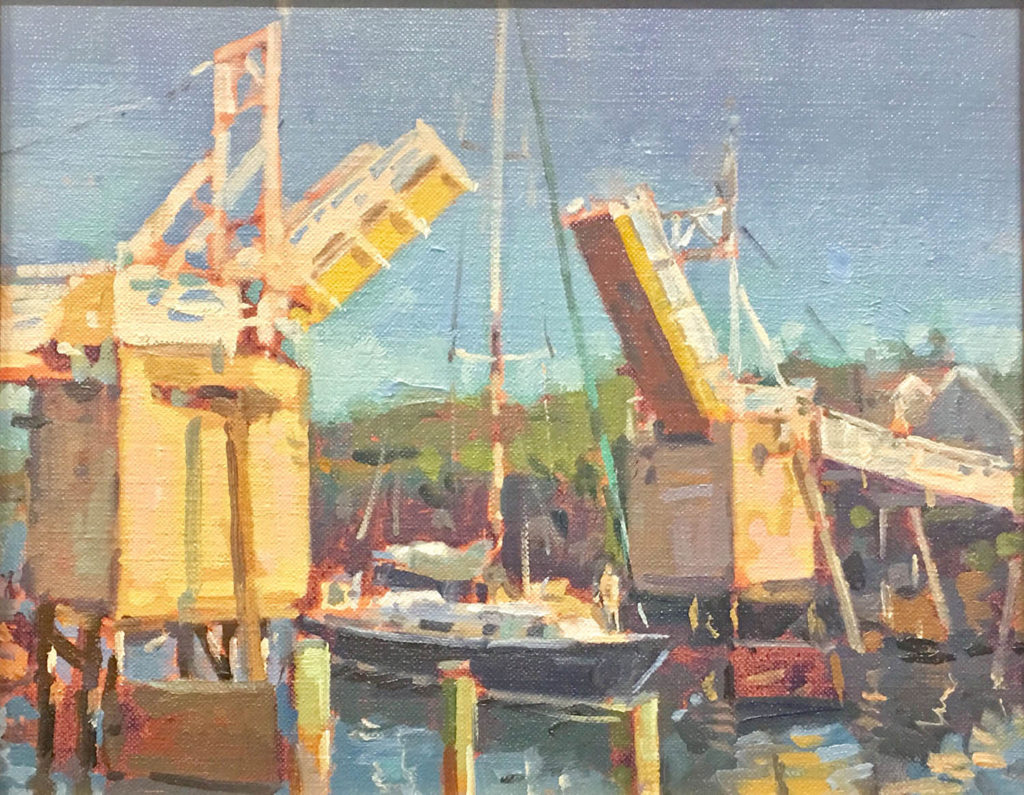
David Lussier | Returning | 9×12 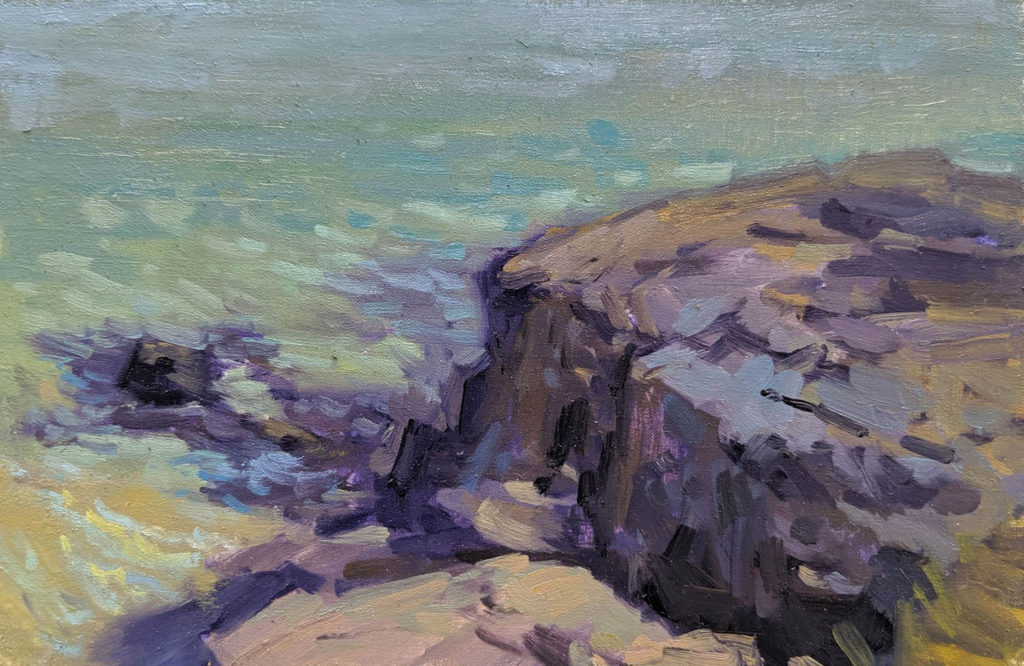
David Lussier | Rocks & Seaweed, Marginal Way | 6×9 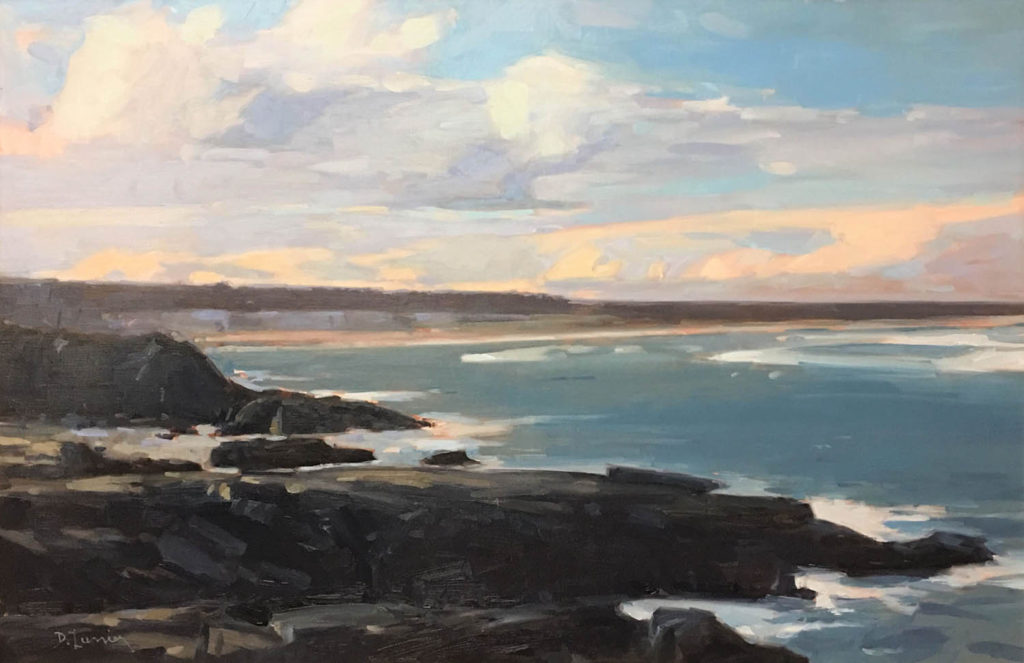
David Lussier | Sky Over Ogunquit | 24×36 
David Lussier | Afternoon Low Tide | 30×24 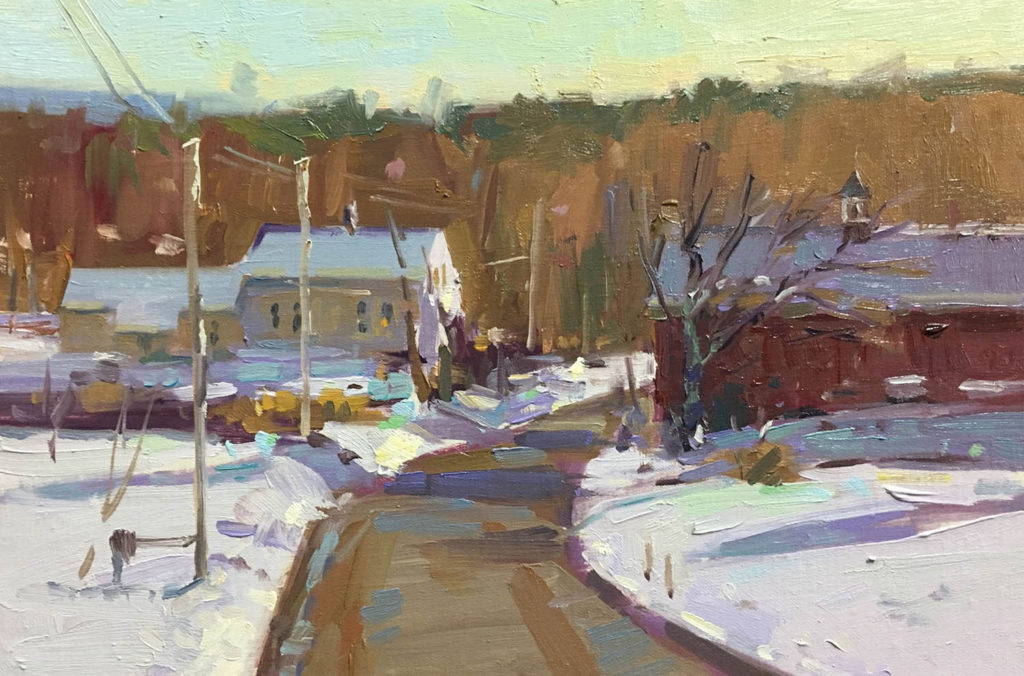
David Lussier | Around The Bend | 6×9 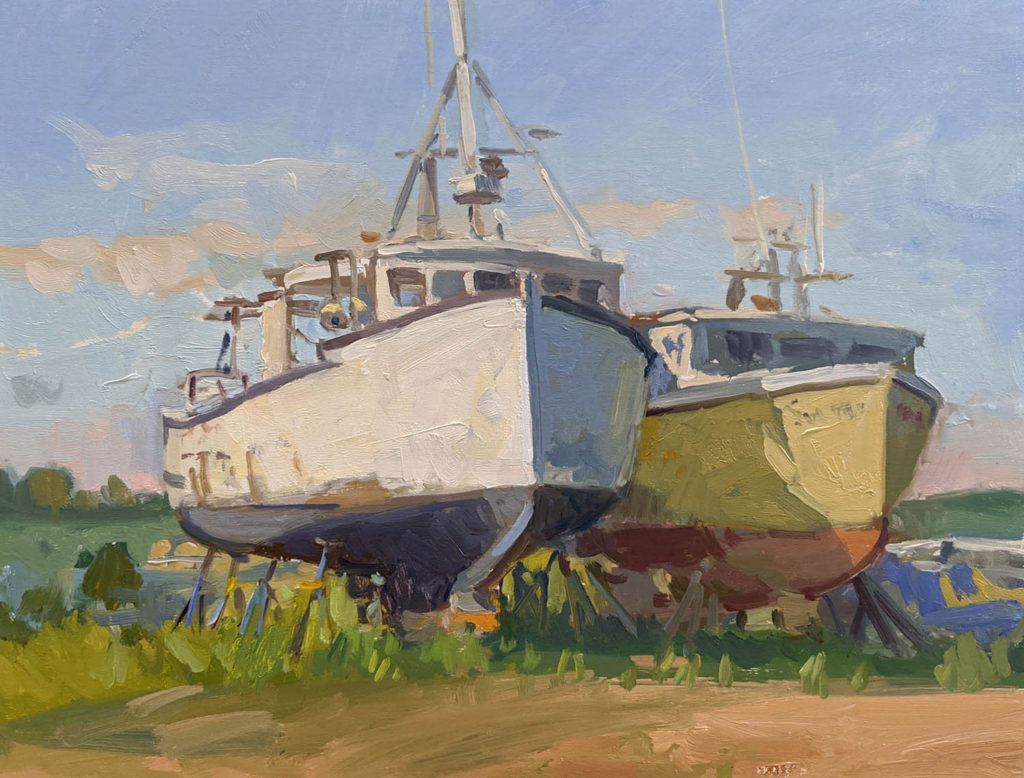
David Lussier | From A Distance | 11×14 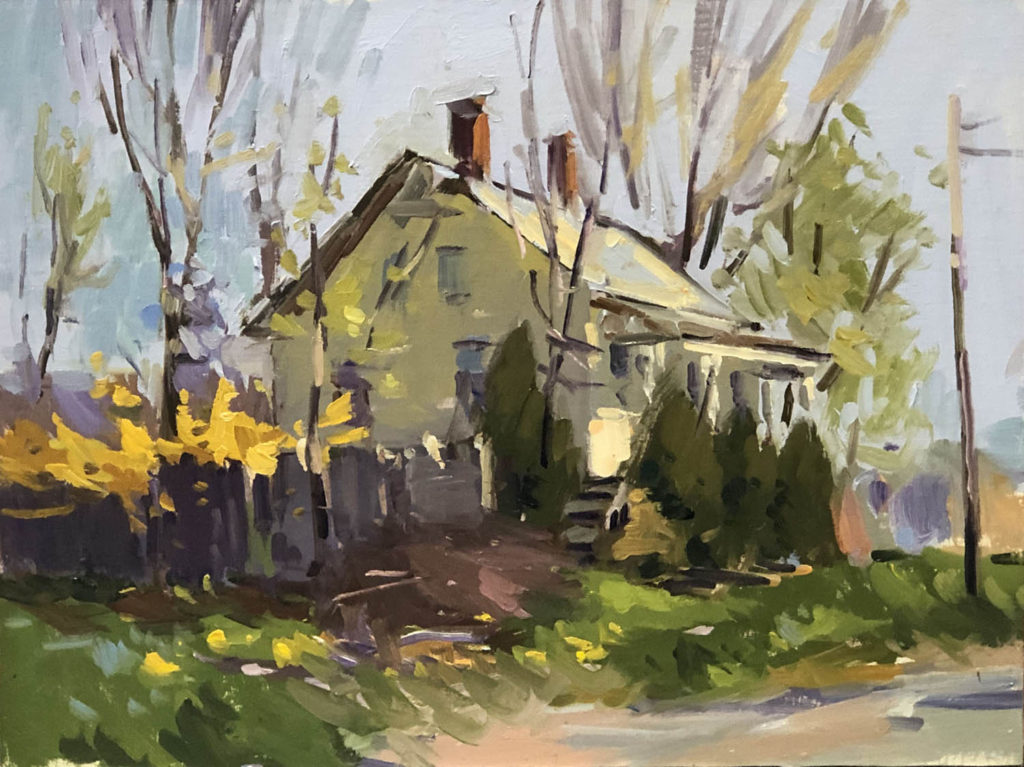
David Lussier | May Morning | 9×12 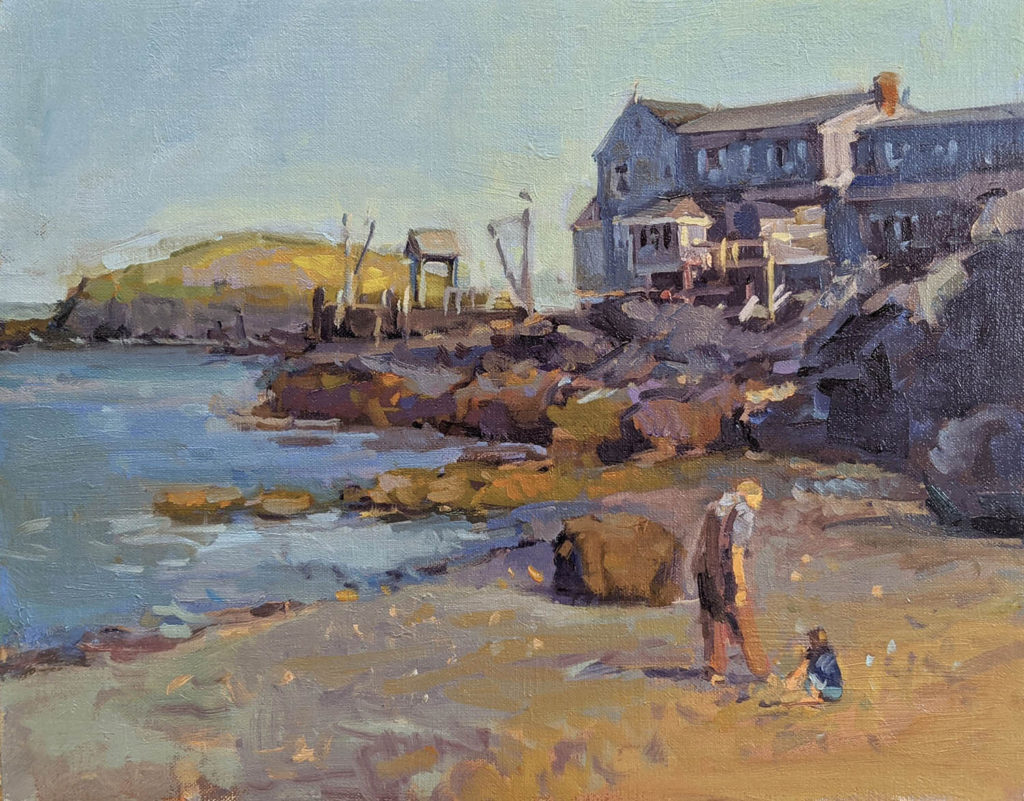
David Lussier | Morning Treasures | 11×14 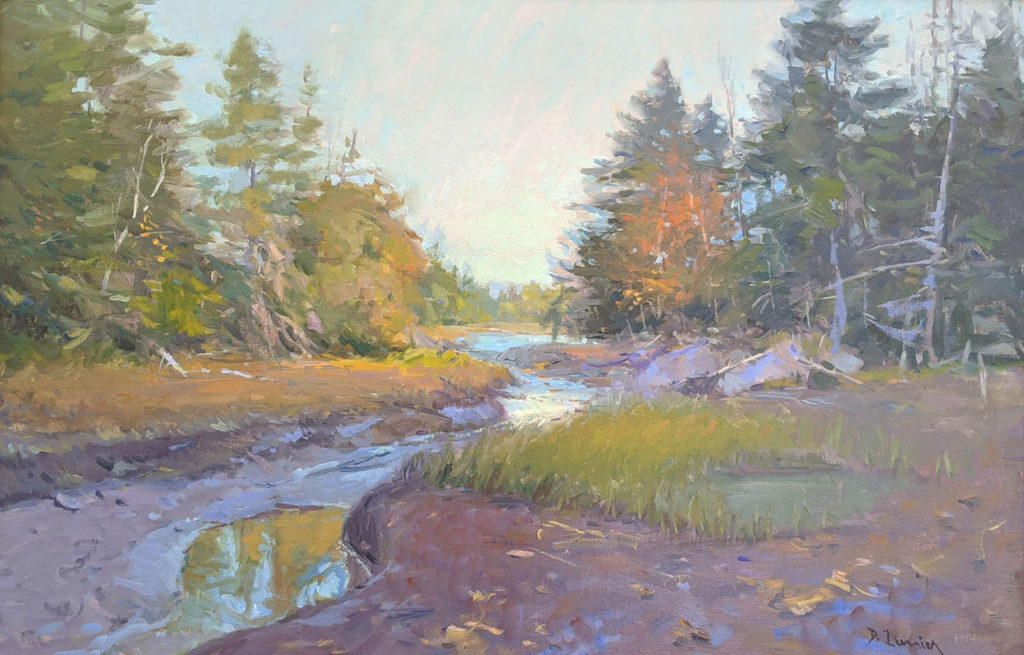
David Lussier | Tidal River | 24×36 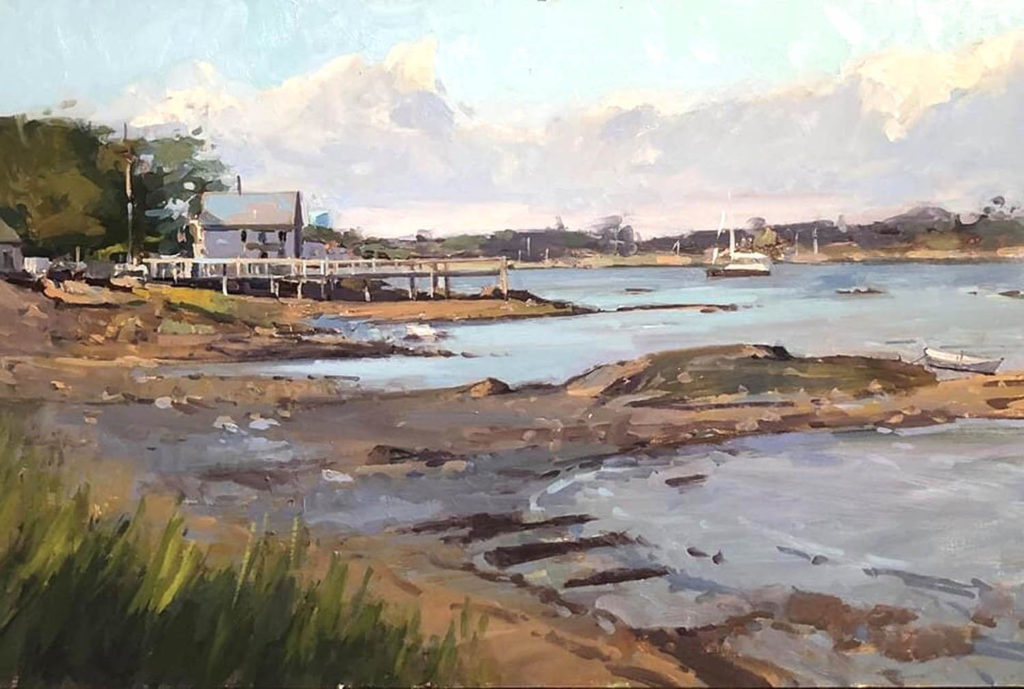
David Lussier | Seacoast Summertime | 20×30
Thinking About Purchasing Real Estate In Ogunquit, Maine (or the surrounding towns)?
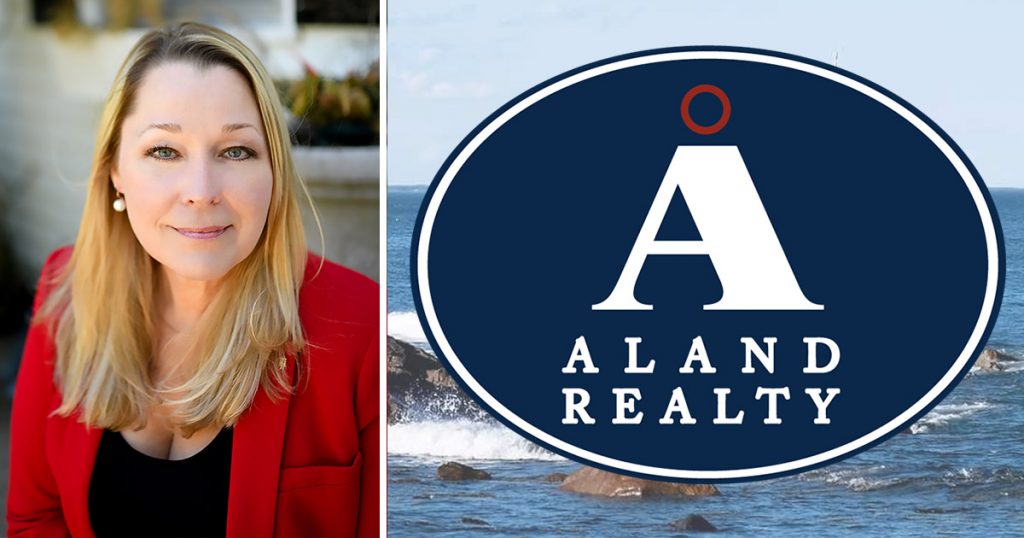
Charlene Taubert is an Ogunquit, Maine resident and licensed Realtor® with Aland Realty Group who is known for providing energetic, enthusiastic, and concierge-class service to her clients seeking to buy (or sell) real estate in Ogunquit, Maine (or the surrounding towns).
Disclaimer: Information is harvested (at time of publication) from publicly available sources and is deemed reliable but not guaranteed – any editorial content is solely opinion-based – availability, prices, details, dates, times, and etc are subject to change or withdrawal at any time and for any reason. All dimensions are approximate and have not been verified. All data should be independently verified.
